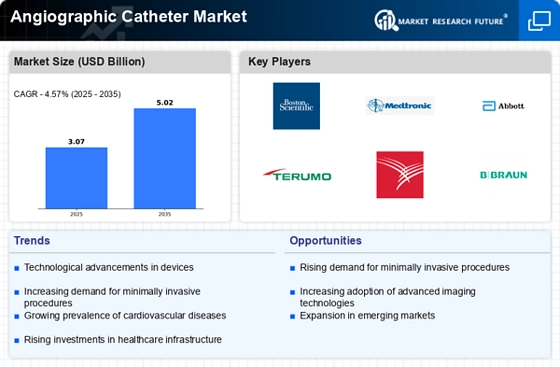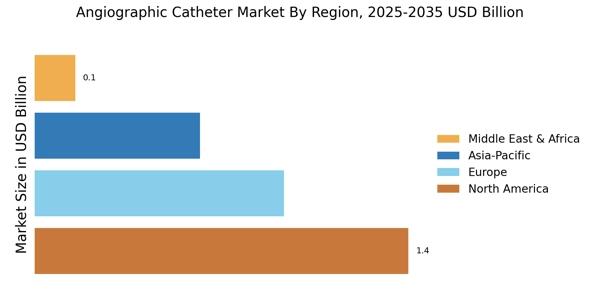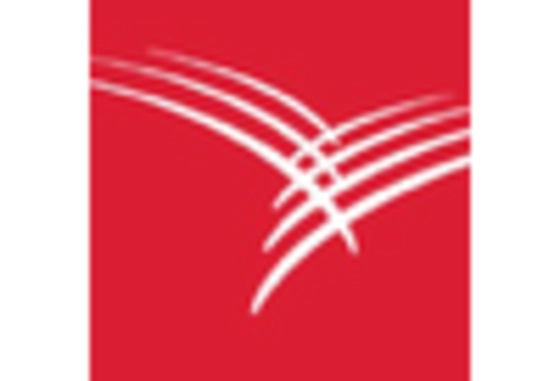Regulatory Changes and Compliance
The Angiographic Catheter Market is also shaped by evolving regulatory changes and compliance requirements. Regulatory bodies are continuously updating guidelines to ensure the safety and efficacy of medical devices, including angiographic catheters. These changes often lead to the introduction of more stringent quality control measures and testing protocols, which can impact market dynamics. Companies that adapt swiftly to these regulations may gain a competitive edge, while those that do not may face challenges in market entry. The emphasis on patient safety and device reliability is likely to drive innovation in catheter design and manufacturing processes, ultimately benefiting the angiographic catheter market.
Rising Prevalence of Cardiovascular Diseases
The Angiographic Catheter Market is significantly influenced by the rising prevalence of cardiovascular diseases, which are among the leading causes of mortality worldwide. As the population ages and lifestyle-related health issues become more common, the demand for angiographic procedures is expected to increase. According to recent statistics, cardiovascular diseases account for nearly 31% of all global deaths, underscoring the urgent need for effective diagnostic and therapeutic interventions. This growing patient population necessitates the use of angiographic catheters for both diagnostic and interventional procedures, thereby propelling market growth. The increasing awareness of cardiovascular health and the importance of early detection further contribute to the rising demand for angiographic catheters.
Growing Demand for Minimally Invasive Procedures
The Angiographic Catheter Market is witnessing a growing demand for minimally invasive procedures, which are preferred for their reduced recovery times and lower risk of complications. Patients increasingly favor these procedures, leading to a rise in the utilization of angiographic catheters for diagnostic and therapeutic interventions. The shift towards minimally invasive techniques is supported by advancements in catheter technology, which allow for more precise navigation and intervention within the vascular system. As healthcare providers aim to improve patient satisfaction and outcomes, the adoption of angiographic catheters in minimally invasive procedures is likely to continue to rise, further propelling market growth.
Increasing Investment in Healthcare Infrastructure
The Angiographic Catheter Market is benefiting from increasing investments in healthcare infrastructure across various regions. Governments and private entities are recognizing the importance of advanced medical technologies in improving patient outcomes. This trend is particularly evident in emerging markets, where healthcare facilities are being upgraded to accommodate advanced diagnostic and therapeutic procedures. The expansion of hospitals and specialized cardiac care centers is expected to drive the demand for angiographic catheters. Furthermore, the establishment of training programs for healthcare professionals in the use of these advanced devices is likely to enhance the adoption of angiographic catheters, thereby contributing to market growth.
Technological Advancements in Angiographic Catheters
The Angiographic Catheter Market is experiencing a surge in technological advancements that enhance the efficacy and safety of procedures. Innovations such as the development of hydrophilic coatings and advanced imaging capabilities are becoming increasingly prevalent. These advancements not only improve the maneuverability of catheters but also reduce the risk of complications during angiographic procedures. The market is projected to grow at a compound annual growth rate of approximately 6.5% over the next five years, driven by these technological improvements. Furthermore, the integration of digital technologies, such as artificial intelligence and machine learning, is likely to optimize catheter design and functionality, thereby expanding the applications of angiographic catheters in various medical fields.


















Leave a Comment